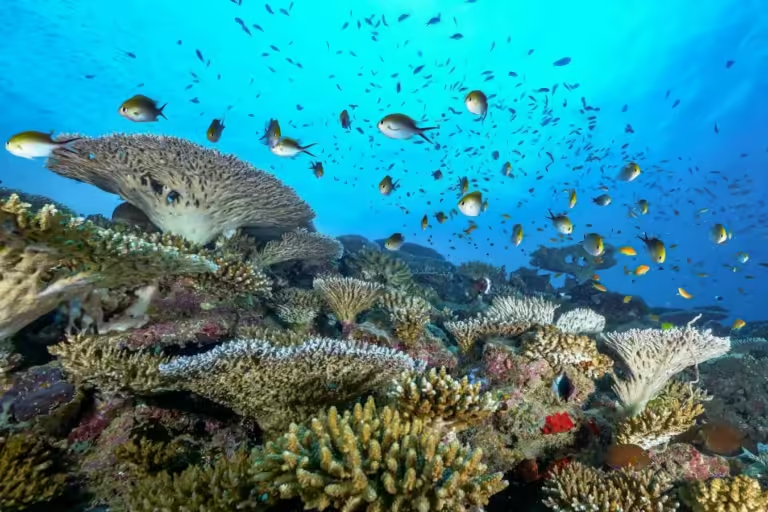
Would drastic action help the reef recover?
Serge Melessane / Alamy
Corals are being hit hard by global warming, and the only way to save coral reef ecosystems may be to replace native species with more heat-tolerant species from other parts of the world. This is the view of two coral researchers, who call for a thorough evaluation of the benefits and risks of deliberately introducing non-native corals, rather than a quick dismissal.
Living coral is essential to the health of reefs and the people who depend on them, says Michael Webster of New York University: “Not only do they look beautiful on reefs, they provide habitat for a variety of organisms, they protect against waves from shorelines, and they create the sand on tropical beaches.”
But corals cannot tolerate temperatures outside the normal range of their habitat: Global warming has caused ocean temperatures to rise sharply, leading to widespread bleaching, in which corals expel the algal symbionts that provide them with much of their nutrients, and can ultimately lead to their death.
“Coral reefs are being lost at a rapid rate in many places around the world, and attempts to restore them through traditional means have had mixed results,” Webster says.
Webster calls for change in an opinion piece he co-authored with Daniel Schindler of Seattle University in Washington. “You might be able to find corals in a totally different place that are already adapted to the environment that’s coming into one place, or that may come into that place in the future — you’re trying to find pre-adapted corals,” he says. Many who want to save the reefs are horrified by the idea, but Webster says things are getting worse and it needs to be seriously considered.
For example, two species of branching corals native to the Caribbean are in very poor condition, Webster says. But there are more than 100 species of branching corals around the world, and some of them, if introduced to the Caribbean, could potentially recreate the habitat that the branching corals provided. “They won’t necessarily be the same color,” Webster says, “but they’re ecologically similar.”
Webster and Schindler acknowledge that there are risks: A worst-case scenario is that devastating diseases or predators are accidentally introduced along with the invasive corals, which could outcompete or hybridize with native species.
But there are also risks in waiting too long to act, Webster says. He thinks that replacing lost species with species that perform a similar role — so-called ecological replacement — is much more realistic than other options currently being considered, such as genetically engineering corals to survive higher temperatures. “The best thing for coral reefs is to maintain the diversity that’s there,” he says.
Terry Hughes of James Cook University in Queensland, Australia, disagrees. “The innocuous term ‘ecological replacement’ is naive, dangerous and stunningly arrogant,” Hughes says. “The authors fail to acknowledge that the accidental or deliberate introduction of invasive species has already caused enormous ecological damage to coral reefs around the world.”
For example, in the 1980s, a previously unknown Pacific disease spread through the entrance to the Panama Canal, wiping out algae-eating sea urchins in the Caribbean and causing an algae bloom that killed millions of corals, Hughes says. “Invasive species are a problem for coral reefs, not a healthy solution.”
topic:

